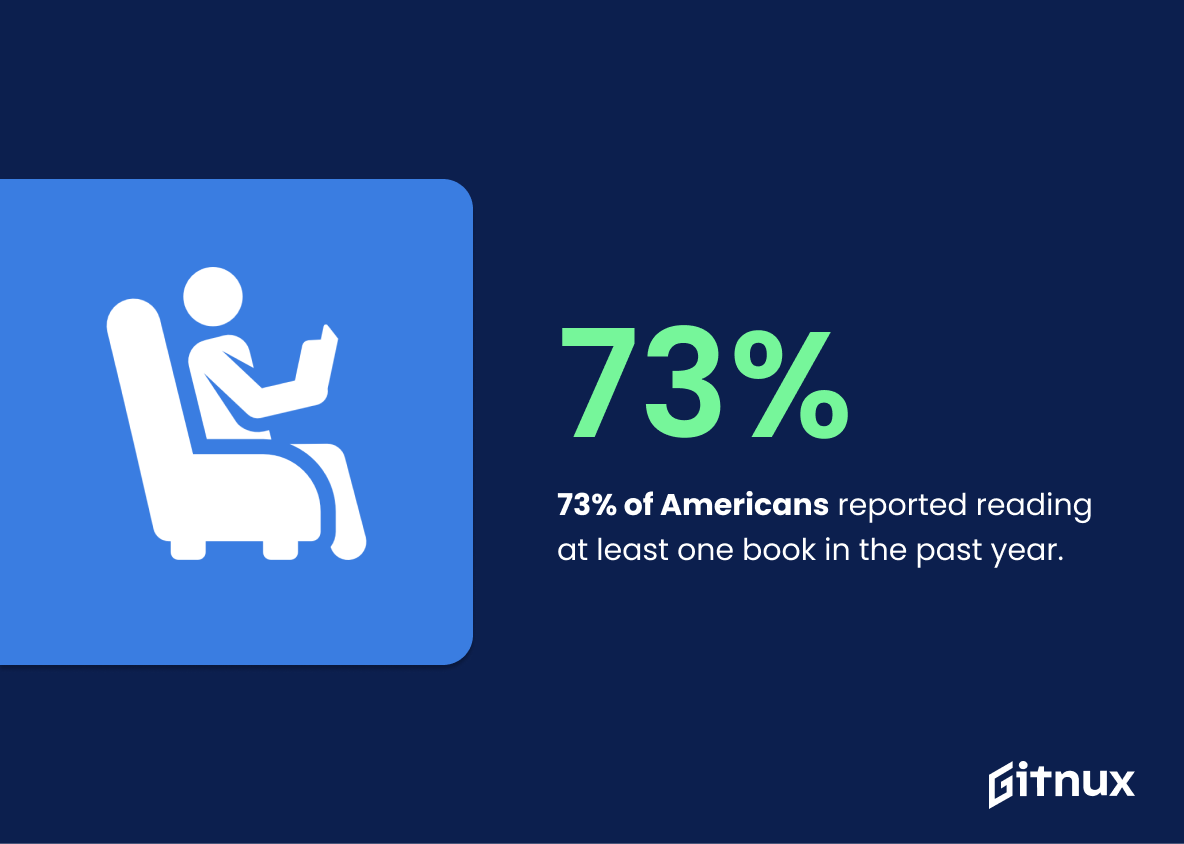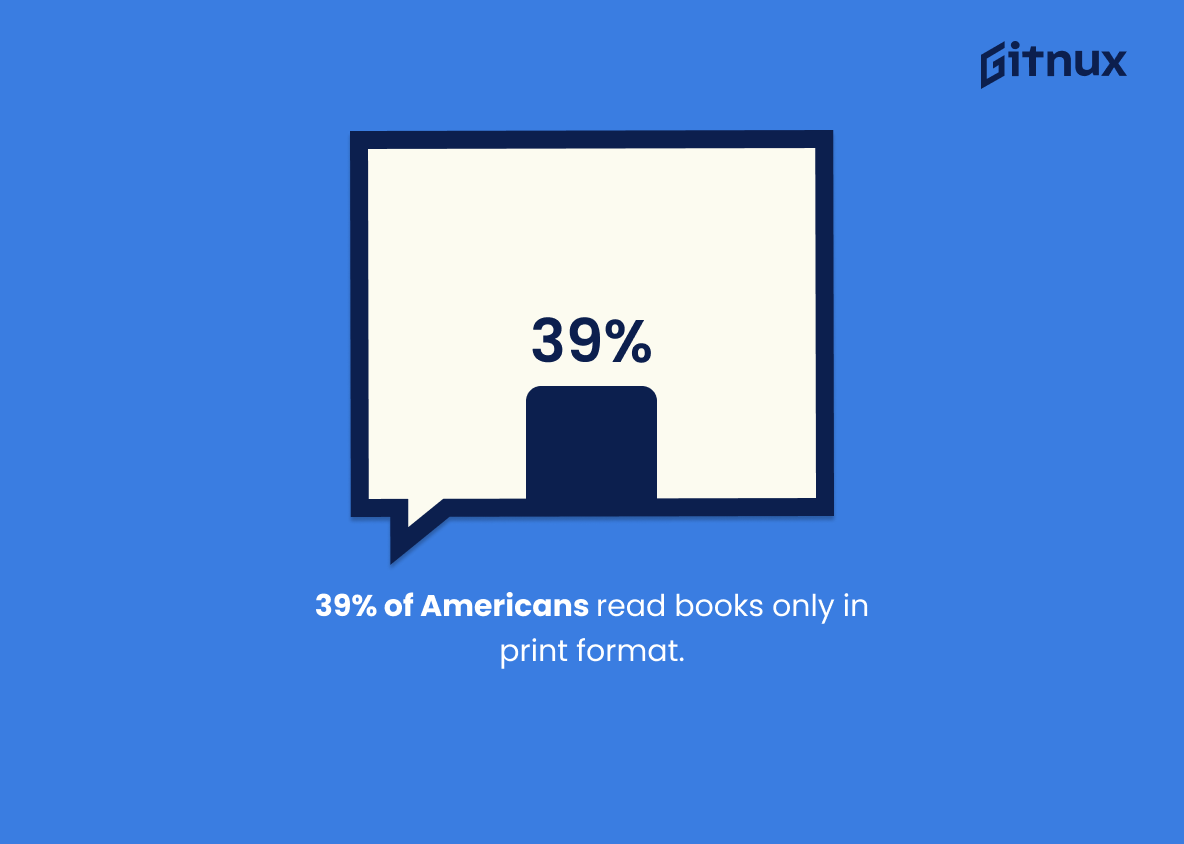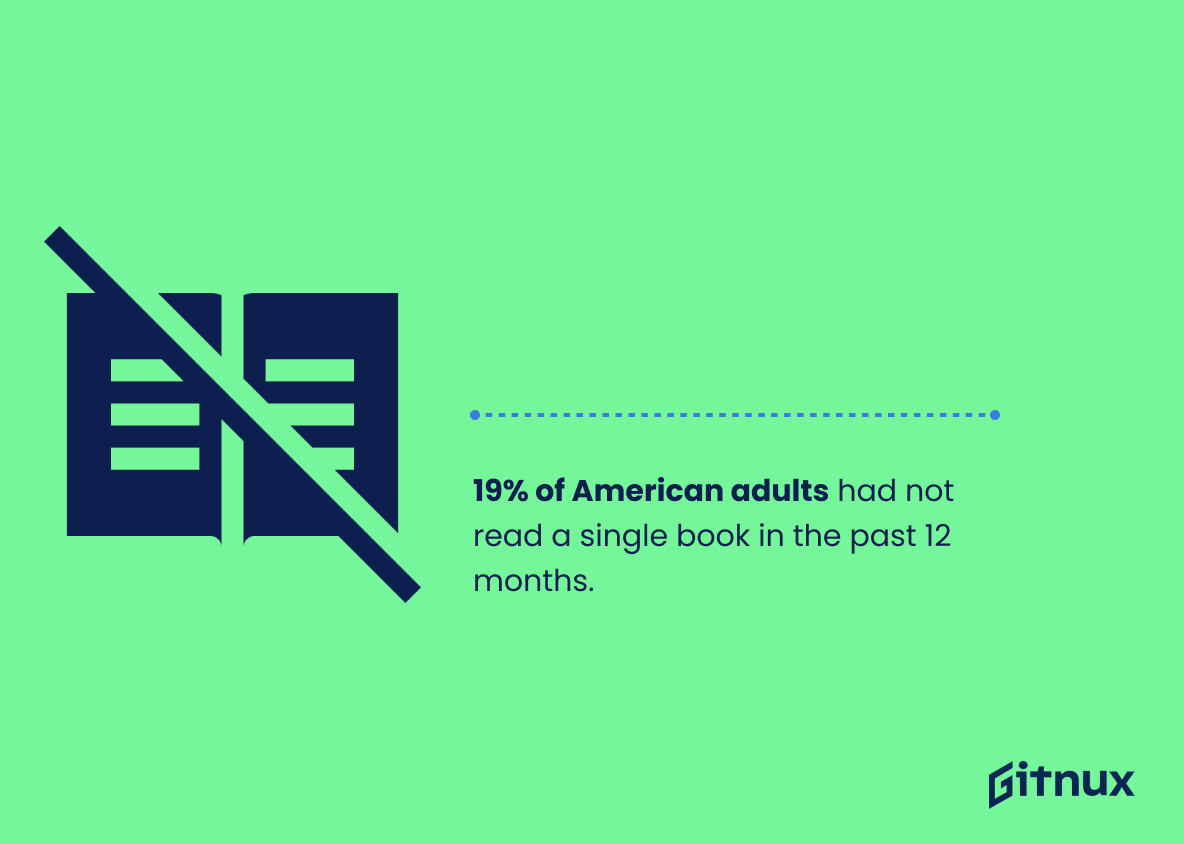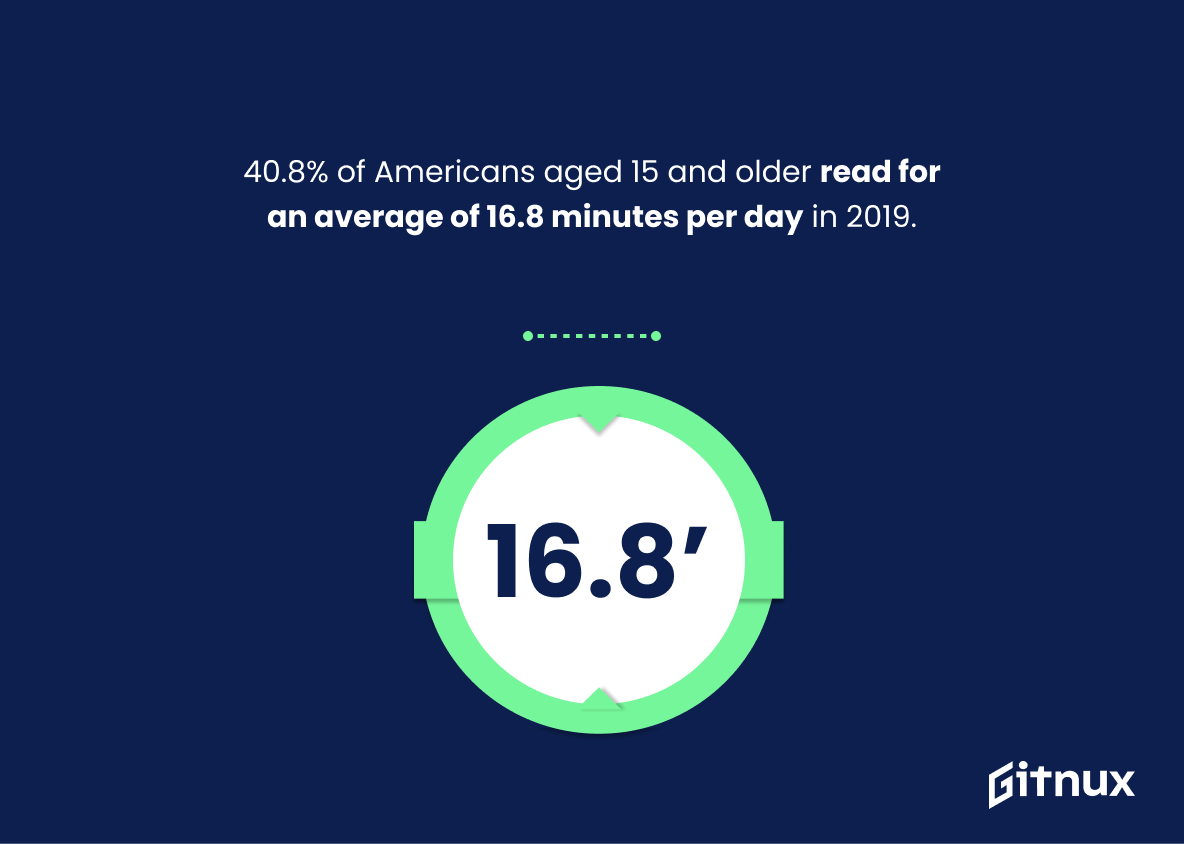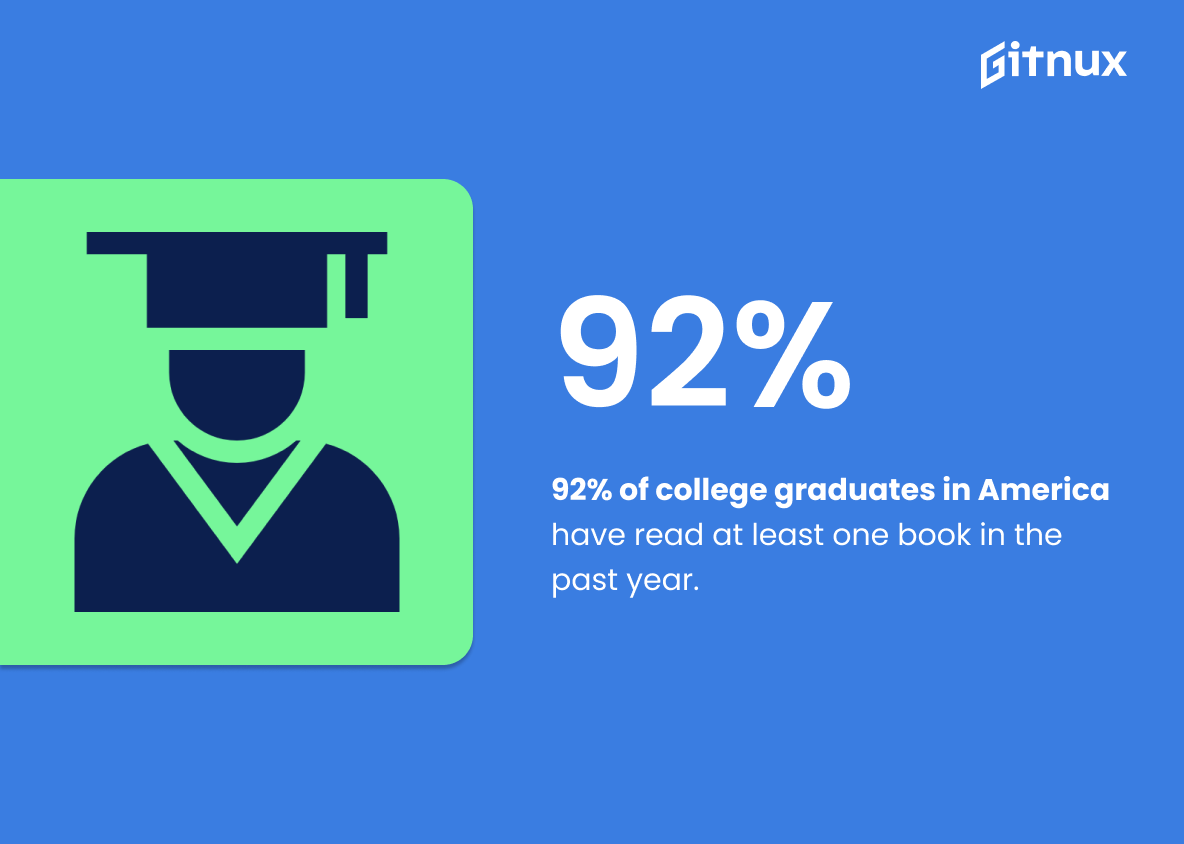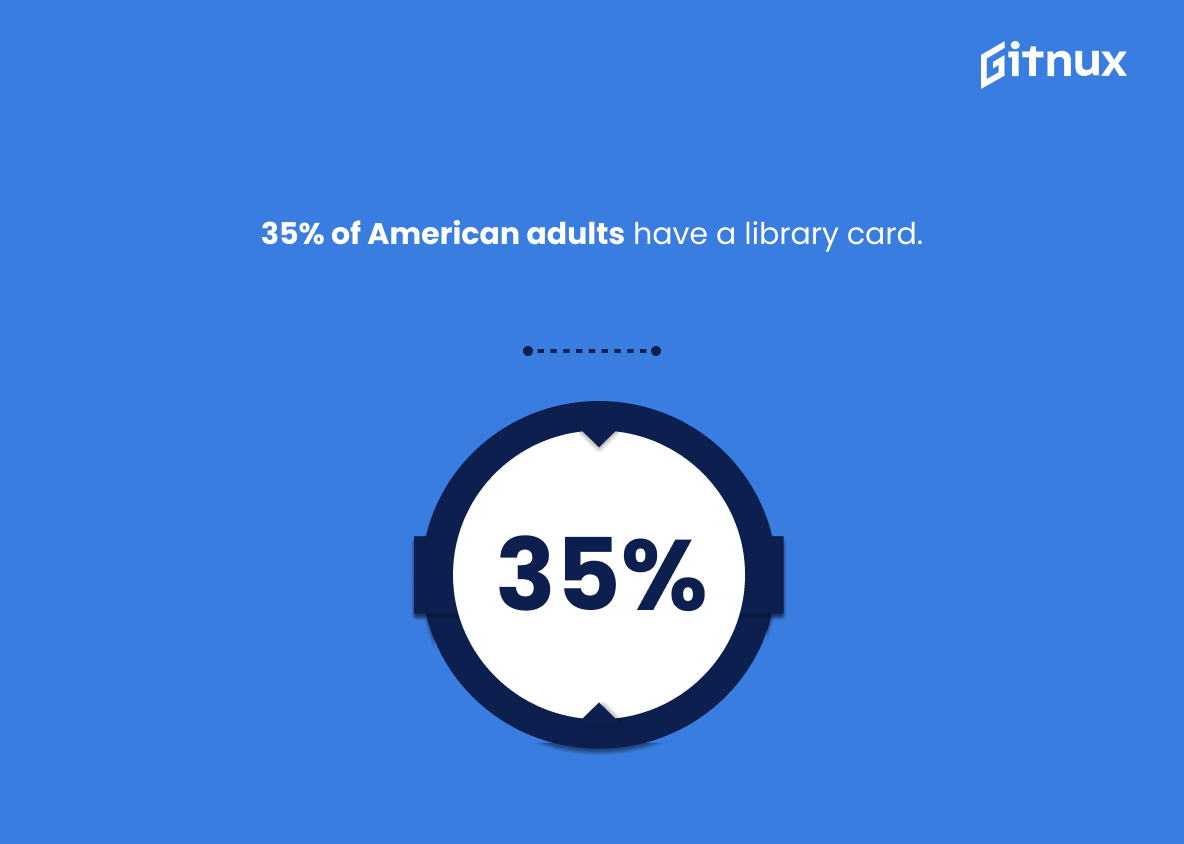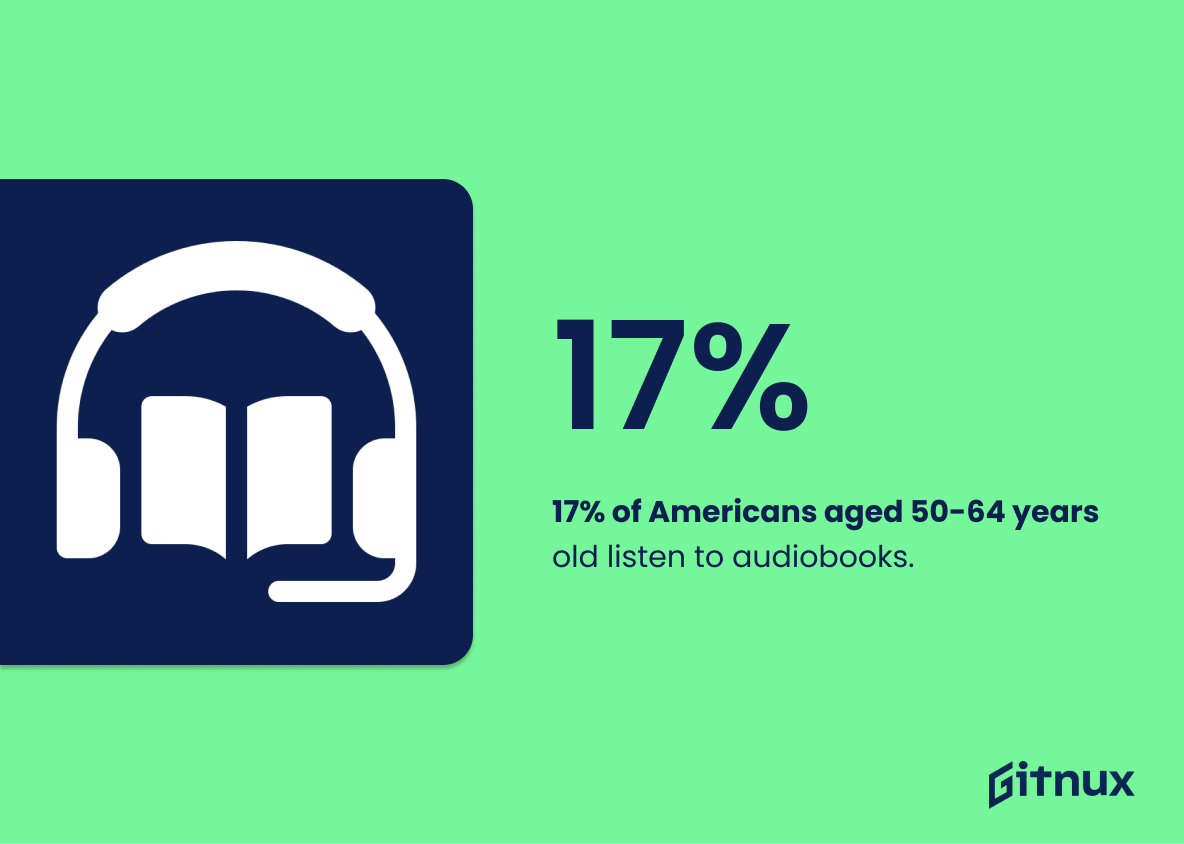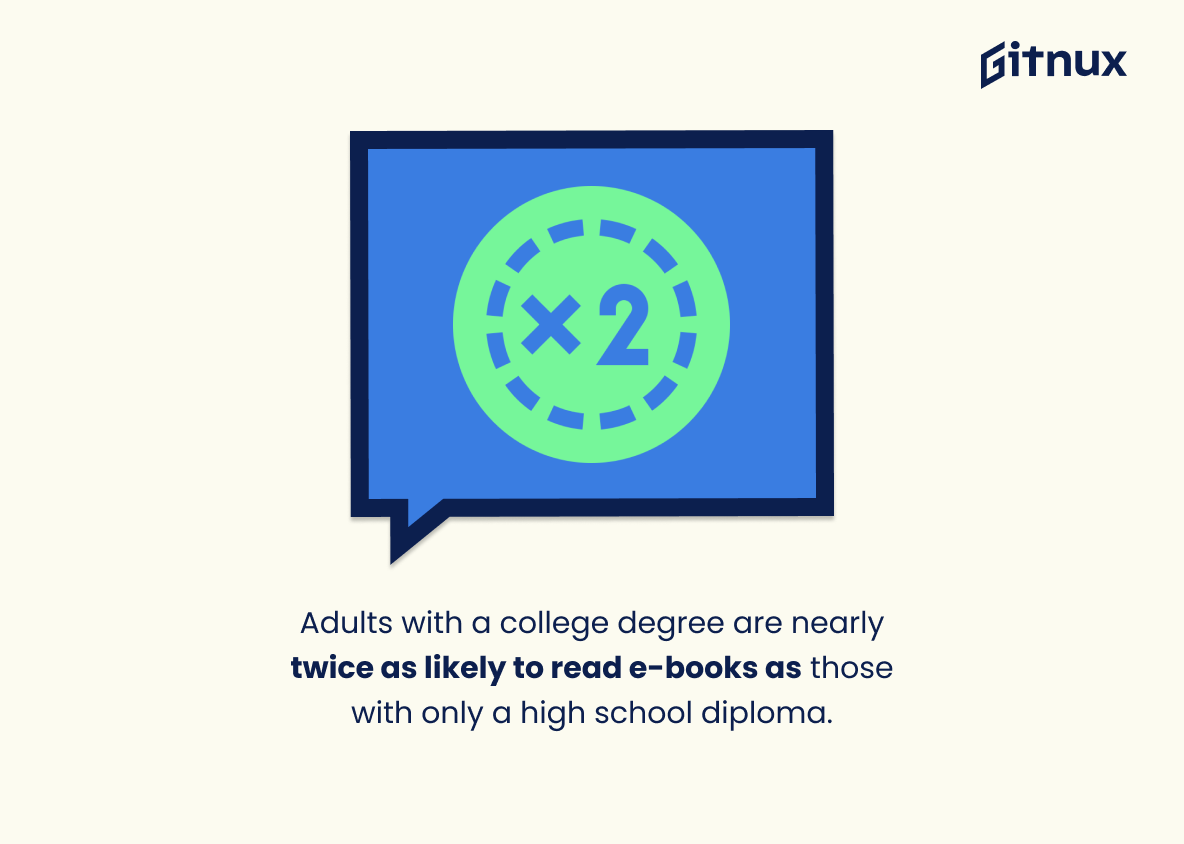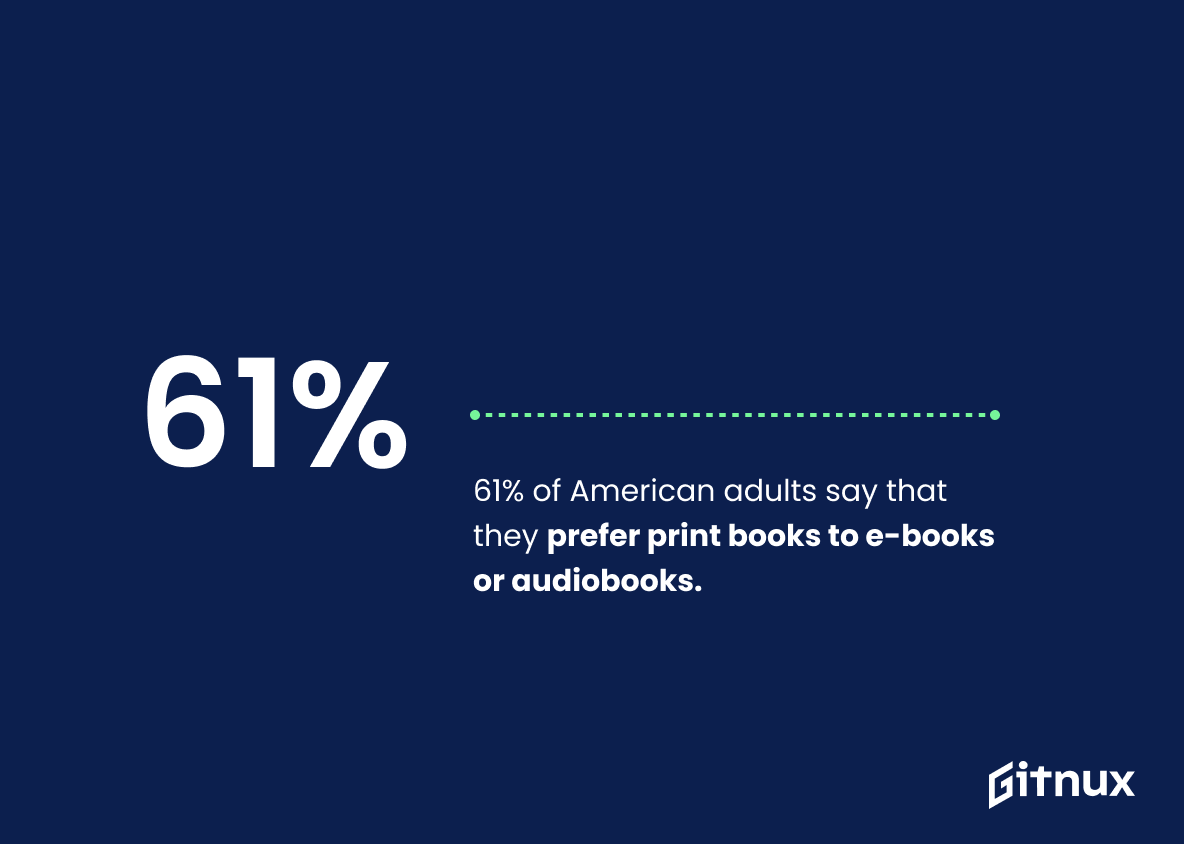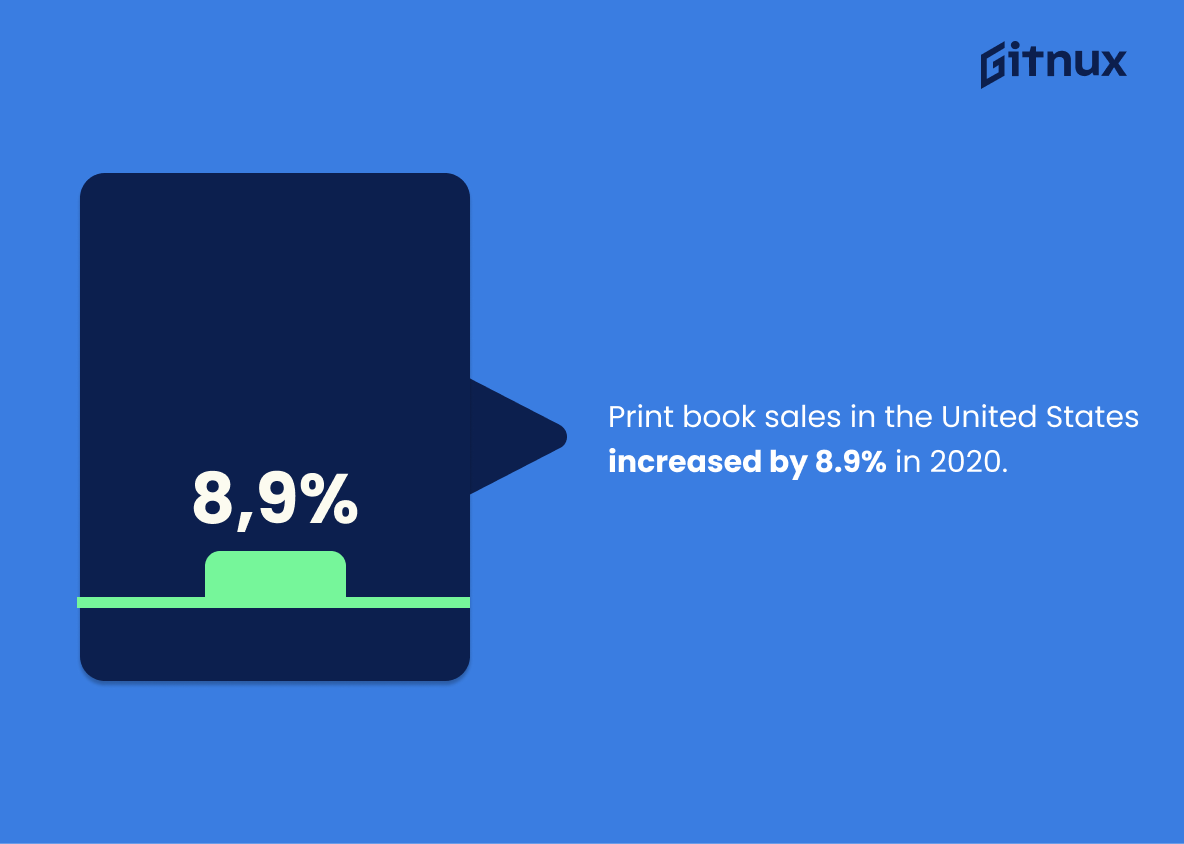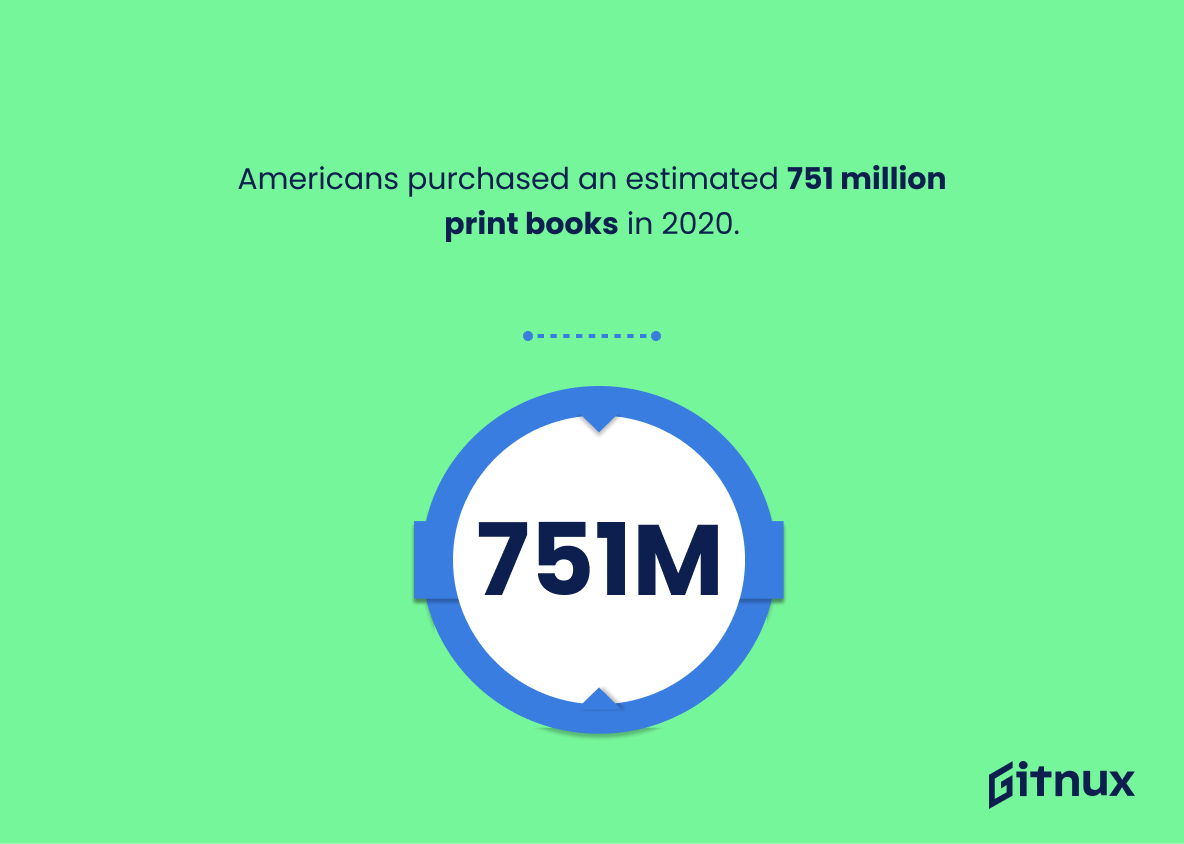Reading is an important part of American culture, and the statistics on reading in America are fascinating. According to a 2019 Pew Research Center survey, 65% of American adults have read a print book in the past year. Additionally, 27% have read an e-book and 12% have listened to an audiobook. Furthermore, 73% of Americans reported reading at least one book in the past year with women averaging 14 books per year compared to men who average 10 books per year. Interestingly enough 39% of Americans still prefer print format when it comes to their reading material while 19 % had not read any books within that same time frame.
In addition 48 percent of all readers spend their time primarily for pleasure while 40 8 percent aged 15 or older spent 16 8 minutes daily doing so according to Bureau Of Labor Statistics data from 2019 . Moreover 61 percent said that they felt improved mental health after engaging with literature as well as 92 percent college graduates having done some formative readings over the course 2020 . The median number was 4 which could be attributed by higher income households being more likely than lower ones (64 vs 57)to engage with printed materials . Younger generations were also found listening more often than others , 26percent 18 29 years old versus 17 50 64 respectively .
Finally US publishing industry generated 25 93 billion dollars net revenue last 2020 due largely by 751 million units sold throughout this period showing how much people value written works even today
Reading In America Statistics Overview
73% of Americans reported reading at least one book in the past year.
This statistic is significant in the context of Reading In America Statistics because it demonstrates that the majority of Americans are engaging in reading activities. It shows that reading is still a popular pastime and that it is an important part of many people’s lives. This statistic is also important because it provides insight into the reading habits of Americans and can be used to inform policy decisions and initiatives related to literacy.
39% of Americans read books only in print format.
This statistic is significant in the context of Reading In America Statistics because it highlights the fact that a large portion of the population still prefers to read books in print format. This indicates that print books are still a popular choice among readers, and that the digital revolution has not completely taken over the reading industry. This statistic is important to consider when discussing the future of reading in America.
19% of American adults had not read a single book in the past 12 months.
This statistic is a stark reminder of the importance of reading in America. It highlights the fact that a significant portion of the population is missing out on the many benefits that come with reading, such as improved communication skills, increased knowledge, and enhanced creativity. This statistic is a call to action for those who are passionate about reading and literacy to continue to advocate for the importance of reading in our society.
Nearly half (48%) of Americans’ reading time is spent reading for pleasure.
This statistic is significant in the context of Reading In America Statistics because it highlights the importance of reading for pleasure in the lives of Americans. It shows that reading for pleasure is a priority for many people, and that it is an activity that is valued and enjoyed. This statistic also suggests that reading for pleasure is an important part of American culture, and that it is something that is actively encouraged and supported.
40.8% of Americans aged 15 and older read for an average of 16.8 minutes per day in 2019.
This statistic is a telling indication of the reading habits of Americans in 2019. It provides insight into the amount of time that Americans are dedicating to reading, and can be used to compare to previous years to see if there has been an increase or decrease in reading. This information can be used to inform blog posts about Reading In America Statistics, as it provides a snapshot of the current reading landscape in the United States.
92% of college graduates in America have read at least one book in the past year.
This statistic is a powerful indicator of the importance of reading in America. It shows that even among college graduates, who are often busy with their studies and other commitments, reading is still a priority. This statistic is a testament to the fact that reading is still a valued activity in the United States, and that it is something that many people prioritize in their lives. It is also a reminder that reading is an important part of education and personal growth, and that it should be encouraged and supported.
The median number of books read by Americans is 4 per year.
This statistic is a telling indication of the reading habits of Americans. It provides insight into the amount of time and effort that Americans are investing in reading, and can be used to compare the reading habits of Americans to those of other countries. Furthermore, it can be used to assess the impact of initiatives aimed at promoting reading in America, such as public libraries and literacy programs. Ultimately, this statistic is an important piece of the puzzle when it comes to understanding the reading culture in America.
64% of American adults with annual household incomes of $75,000 or more read print books, compared to 57% of adults with incomes of $30,000 or less.
This statistic is significant in the context of Reading In America Statistics because it demonstrates the correlation between income and reading habits. It shows that those with higher incomes are more likely to read print books than those with lower incomes. This highlights the need for initiatives to make reading more accessible to those with lower incomes, in order to ensure that everyone has the opportunity to enjoy the benefits of reading.
26% of younger Americans (aged 18-29) have listened to an audiobook.
This statistic is significant in the context of Reading In America Statistics because it demonstrates that younger Americans are engaging with literature in a variety of ways. Audiobooks provide an accessible and convenient way for people to enjoy stories, and the fact that 26% of younger Americans have listened to one indicates that they are taking advantage of this opportunity. This statistic is a testament to the fact that reading is still alive and well in America, even if it is taking on different forms.
35% of American adults have a library card.
This statistic is a telling indication of the importance of libraries in American society. It shows that a large portion of the population values the resources and services that libraries provide, such as access to books, magazines, and other materials. This statistic is also important in the context of reading in America, as it suggests that libraries are a major source of reading material for many Americans.
17% of Americans aged 50-64 years old listen to audiobooks.
This statistic is significant in the context of Reading In America Statistics because it demonstrates that audiobooks are becoming increasingly popular among older Americans. It shows that even those who may not have the time or ability to read physical books are still engaging with literature in some way. This statistic is a testament to the power of audiobooks and their ability to reach a wider audience.
Adults with a college degree are nearly twice as likely to read e-books as those with only a high school diploma.
This statistic is a powerful indicator of the importance of education in the digital age. It shows that those with a college degree are more likely to take advantage of the convenience and accessibility of e-books, while those with only a high school diploma may be missing out on the benefits of digital reading. This is an important point to consider when discussing the state of reading in America, as it highlights the need for educational opportunities that can help bridge the digital divide.
61% of American adults say that they prefer print books to e-books or audiobooks.
This statistic is significant in the context of Reading In America Statistics because it highlights the enduring popularity of print books. Despite the rise of e-books and audiobooks, the majority of American adults still prefer the traditional format. This indicates that print books are still a major part of the reading landscape in the United States.
Print book sales in the United States increased by 8.9% in 2020.
This statistic is a testament to the enduring power of print books in the United States. Despite the rise of digital media, print books remain a popular choice for readers, and the 8.9% increase in sales in 2020 is a clear indication of this. This is an important statistic to consider when discussing the state of reading in America, as it shows that print books are still a viable and popular option for readers.
Americans purchased an estimated 751 million print books in 2020.
This statistic is a testament to the enduring power of print books in America. Despite the rise of digital media, Americans still find value in the physicality of print books, as evidenced by the estimated 751 million print books purchased in 2020. This statistic is a reminder that reading is still a beloved pastime in the United States, and that print books remain a popular choice for readers.
The U.S. book publishing industry generated $25.93 billion in net revenue in 2020.
This statistic is a powerful indicator of the importance of reading in America. It shows that the book publishing industry is thriving, and that Americans are investing in books and reading materials. This is a positive sign for the future of reading in America, as it suggests that people are still interested in reading and are willing to spend money on books. It also indicates that the book publishing industry is a viable and profitable industry, which is beneficial for authors, publishers, and readers alike.
Conclusion
Reading in America is a popular pastime, with 65% of American adults having read a print book in the last year and 73% reporting that they have read at least one book. Women tend to be more avid readers than men, reading an average of 14 books per year compared to 10 for men. While 39% prefer print books over e-books or audiobooks, 27% have still read an e-book and 12% listened to an audiobook. Additionally, 40.8 % of Americans aged 15+ spend 16 minutes on average each day reading while 61 percent say it improves their mental health. College graduates are twice as likely as those with only high school diplomas to read e-books and 35 percent own library cards which can help them access even more material for free or reduced cost prices. The U.S publishing industry generated $25 billion dollars in 2020 alone from 751 million sold copies showing how much people value literature despite 19 percent not having picked up any kind of book within the same time frame
References
0. – https://www.bls.gov
1. – https://www.publishingperspectives.com
2. – https://www.pewresearch.org
3. – https://www.publishersweekly.com
4. – https://www.ala.org
